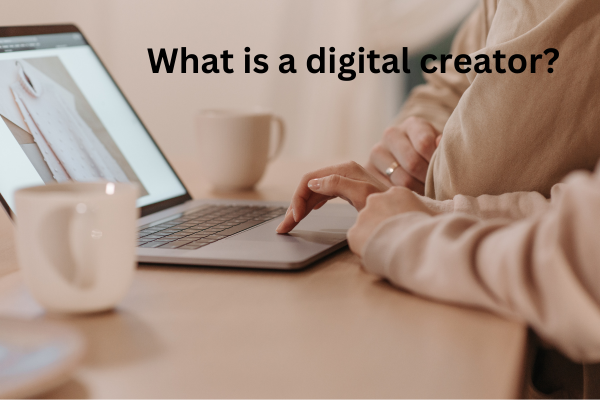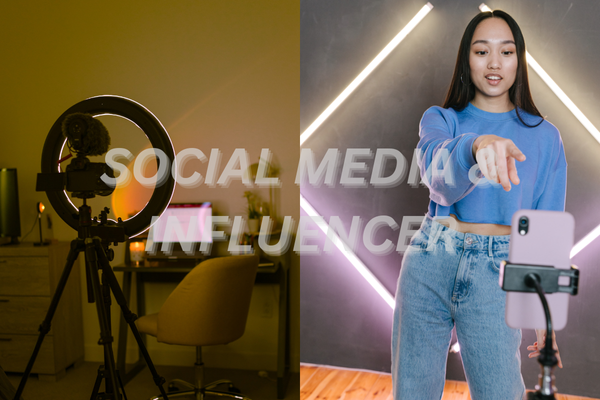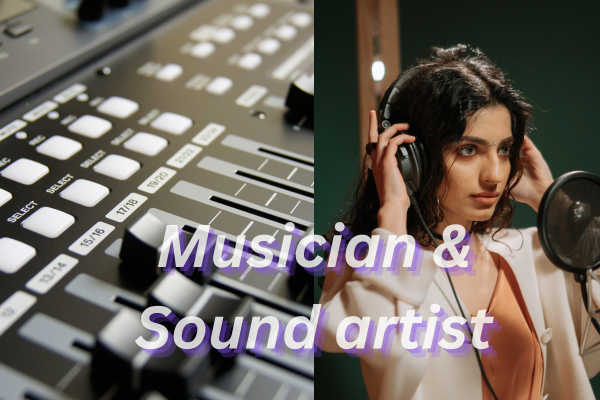
Over 50 million people can consider themselves to be a digital creators or internet influencer.
Introduction of digital creator
Imagine a world where creativity knows no bounds and traditional barriers to content creation have all but vanished. whenever & whereever you look out side, you are surrounded by digital creator, And social media influencers and professionals.
digital creator’s are in front lines of our digital world’s revolutioners, they are world wide big platforms like youtube, facebook, Instagram, tiktok & blog they share their unique voice and video content with their audience across the world. From producing their viral videos and podcasts to curating eye-catching graphics and writing thoughtful articles, digital creators are shaping the future of media and entertainment.
In this post, we’ll dive deep into the world of digital creation, exploring who these creators are, what they do, and why their role is so crucial in today’s digital landscape. Whether you’re an aspiring creator looking for inspiration, this guide will provide you with a clear understanding of what it means to be a digital creator in the 21st century.
Table of Contents
What is a digital creator?
A digital creator, or digital content creator, is someone who produces and publishes content such as writing In platfrom like BLOG, photography or reels in platform like INSTAGRAM, various type video content in platform like YOUTUBE, and some other project across various online platforms.
It’s include social media, blogs, podcasts, or videos. They create and share content that is authentic to them and their brand, and they usually have a specific niche or audience they target.
A digital creator or influencer is someone who focuses on building a community of followers, engaging with their audience, and sharing their unique entairtentment purpous that his/her follower can enjoy this.
Types of Digital Creators
In this carrier you might know there are various type of work are waiting for new creator.
Content Creators
Definition: particular who produce content and share online, such as videos, blogs, and social media posts.
Examples: YouTubers, bloggers, podcasters.
Subtypes:
- Video Creators: They are produce video content for platforms like YouTube, TikTok, Facebook and Vimeo.
- Bloggers: They Write various type of artical and manage blogs. from travel to technology.
- Podcasters: Create audio content and give some outrageous information on various topics, distributed via platforms like Podbean, Buzzsprout, Spotify and Apple Podcasts .

SOCIAL MEDIA INFLUENCERS
Definition: Digital Creators who have a significant online following and influence their audience’s. they might know what their followers or fan’s want to watch or get to know
Examples: Instagram influencers, Facebook influencers, TikTok stars, Twitter personalities.
Subtypes:
- Fashion Influencers: They share their daily life fashion tips and styling tips that how can be fashionable.
- Lifestyle Influencers: They Focus on day-to-day life, offering insights into travel, food tastes, health care & wellness.
- Tech Influencers: They want to know you that tech and gadgets are what types of beneficial or danger. they recommended various types of gadgets and technical products.

Visual Artists
Definition: Digital creators who produce visual art in digital formats.
Examples: Digital illustrators, concept artist, digital art, motion graphics, graphic designers, animators.
Subtypes:
- Digital Illustrators: Create art using digital tools like Photoshop or Procreate. they create original images for either commissioned work or personal projects.
- Graphic Designers: Design digital graphics for websites, advertisements, and branding. Graphic designer create visual concepts, using computer software or by hand, to communicate ideas that inspire, inform, and captivate consumers.
- Animators: Produce animated content for videos, films, or social media. they produces multiple images called frames, which when sequenced together create an illusion of movement.

Online Educators
Definition: Experts who create and share educational content online. Online is a viable part-time job for Indian students.
Examples: Online course creators, tutorial creators, webinar hosts, online teaching.
Subtypes:
Course Creators: Create courses that only used by learners and provide valueable learning experiences and they sell online courses on platforms like Udemy, Coursera, Kajabi, Learndash.
Tutorial Creators: Offer step-by-step guides on platform like YouTube or blogs. Tutorial creator provide you to create interactive learning tool, software which help people to easy learn.
Webinar Hosts: Conduct live online sessions to teach or discuss specific topics, leading a Q&A session, they guide you on various type of topics.

Musicians and Sound Artists
Definition: Creators who produce music and share online. Sound artist create physical works but use sound as primary medium for expression. Sound artist generate various type of beat or theme that make music more nostalgic.
Examples: Independent musicians, DJs, sound designers.
Subtypes:
Independent Musicians: Share original{official} music on platforms like SoundCloud, spotify, Bandcamp, or YouTube.
DJs: Mix and share music sets or live performances online or offline.
Sound Designers: Create sound effects and audio for videos, games, or apps.

The Creative Process
Ideation and Inspiration
- Finding Inspiration: Digital creators takes inspiration from various sources, such as personal experiences, current trends, or feedback from their audience. They often stay updated with industry like news, social media trends to make new ideas.
- Brainstorming: Here involves rough ideas, mind mapping, and discussing concepts with peers or collaborators. Creators might use tools like digital notebooks or brainstorming apps to organize their thoughts.
- Research and Planning: Once creator get a idea, creators dig into deep research for their audiance. This could involve studying competitors, exploring topics in-depth, or learning new techniques. Planning the content format, target audience, and distribution strategy monitizing is also key.
Content Creation
- Scripting and Storyboarding: For video creators, first step make script for dialogue or narratives and creating a storyboard to visualize the final product. Writers may outline their articles or draft a plot for a story, while visual artists might sketch initial digital designs for making video.
- Design and Production: This is the core of the creative process where the actual content is made. Digital artists work on illustrations or designs, video creators shoot and edit footage, and writers craft their pieces. This phase often involves iterative editing and refinement.
- Use of Tools and Technology: Creator use specific tools or software for making high quality content. creators rely on various digital tools like Adobe Creative Suite for design, Final Cut Pro or Premiere Pro for video editing, or WordPress for blogging. The choice of tools often influences the quality and style of the final product.
Publishing and Distribution
- Selecting Platforms: Creators choose where to publish their content based on their audience and content type. Options range from social media platforms like Instagram and TikTok to blogging platforms like Medium or personal websites.
- Scheduling and Posting: Timing can be crucial for content visibility. Creators often use scheduling tools to post content at optimal times when their audience is most active. When you publish your first content you might try that your next all content publish on same and exact time.
- Engaging with the Audience: After publishing, engaging with the audience through comments, shares, and direct messages helps build a community and gain valuable feedback for your future content.
Post-Creation Reflection
- Analyzing Performance: Creators use analytics tools to measure the success of their content. Metrics like views, shares, engagement rates, and conversion rates offer insights into what worked and what didn’t. so he/she could try to best for their next content.
- Learning and Iteration: Based on the analysis, creators adapt and improve their future content. They might experiment with new formats, styles, or topics, continually evolving their creative process.
Skills and Tools
To be famous as a digital creator, you need a mix of creativity and technical skills. It’s important to be innovative and come up with new ideas, whether it’s for videos, graphics or writing. Mastering tools like Adobe Premiere Pro or Photoshop are essential along with good communication skills to connect with your audience and collaborate effectively. Time management helps juggle multiple projects, while understanding marketing and branding is key. Finally, adapting to new trends and staying up-to-date ensures that you continue to grow and attract your audience.
Key Tools for Digital Creators
Content Creation Software:
- Adobe Creative Suite: A comprehensive set of tools including Photoshop for image editing, Illustrator for vector graphics, and Premiere Pro for video editing. It’s a staple for many digital creators.
- Canva: An accessible graphic design tool, ideal for creating social media graphics, presentations, and other visual content. Its user-friendly interface makes it popular among beginners.
- Final Cut Pro: A professional video editing software used by many content creators for its advanced features and seamless integration with other Apple products.
Content Management and Publishing Platforms:
- WordPress: A leading content management system for bloggers and website creators. It offers extensive customization options and a vast library of plugins for enhanced functionality.
- YouTube: The go-to platform for video creators. It provides robust tools for video publishing, audience engagement, and performance analytics.
- Substack: A platform for writers to publish newsletters and monetize their content. It’s becoming increasingly popular for its simplicity and support for independent creators.
Social Media and Marketing Tools:
- Hootsuite: A social media management tool that allows creators to schedule posts, monitor engagement, and track performance across multiple platforms from a single dashboard.
- Buffer: Similar to Hootsuite, Buffer helps with scheduling posts and analyzing social media performance, making it easier to maintain a consistent online presence.
- Google Analytics: An essential tool for understanding website traffic, user behavior, and content performance. It helps creators make data-driven decisions to optimize their content strategy.
Emerging Tools and Technologies:
- AI-Powered Tools: Artificial intelligence is increasingly being integrated into creative tools. For instance, AI-based design tools like Canva’s Magic Resize or Adobe’s Sensei are simplifying complex tasks. AI-driven content generators and enhancers are also gaining traction, helping creators streamline their workflows.
Monetization Strategies (How to Monetize Your Creativity)
Ad Revenue and Sponsorships:
- Ad Revenue: Digital creators often make money through ad revenue. On YouTube, they use AdSense to earn from ads shown and clicked on their videos. Similarly, blogs and websites can earn by displaying banner ads from networks like Google AdSense or Media.net.
- Sponsored Content: Another way digital creators earn money is by partnering with brands for sponsored content. Brands pay creators to promote their products or services through various media. It’s important for creators to be transparent and disclose these sponsorships to their audience.
- Affiliate Marketing: Creators can also earn money by promoting products through affiliate marketing. They get a commission for each sale made through their unique affiliate link. Many use platforms like Amazon Associates or ShareASale to find products that fit their niche.
Selling Digital Products:
- E-books and Guides: Digital creators can turn their expertise into e-books, guides, or tutorials and sell them online. This is a great way for bloggers, writers, and educators to share their knowledge and earn money. Platforms like Amazon Kindle Direct Publishing and Gumroad simplify the process of selling digital products.
- Online Courses and Workshops: Creators with specialized skills can make money by creating and selling online courses or hosting workshops. Platforms like Udemy, Teachable, and Skillshare make it easy to offer courses on topics like photography or coding and earn from course sales or enrollments.
- Design Assets and Templates: Visual creators like graphic designers and photographers can sell digital assets such as stock photos and design templates. Platforms like Etsy, Creative Market, and Shutterstock offer marketplaces for these products.
Memberships and Subscription Models:
- YouTube Memberships: For video creators, YouTube offers channel memberships where viewers can pay a monthly fee to access exclusive perks like members-only videos, live streams, and badges.
- Substack and Newsletter Subscriptions: Writers and content creators can monetize their email newsletters by offering premium content to subscribers. Substack makes it easy to set up paid subscriptions and connect with a loyal audience.
Audience Engagement
Audience engagement is crucial for digital creators to build and maintain a loyal following. It involves actively interacting with your audience through comments, social media, and direct messages. Regularly posting quality content that resonates with your audience’s interests and responding to feedback fosters a sense of community. Engaging through live streams, Q&A sessions, or polls can also boost interaction. Understanding audience analytics helps in tailoring content to meet their preferences. Consistency, authenticity, and valuing your audience’s input are key strategies to keep them engaged and invested in your creative journey.
Resources & Online courses and videos
For aspiring digital creators, numerous resources, online courses, and videos are available to develop essential skills. Platforms like Coursera, Udemy, and Skillshare offer courses in graphic design, video editing, social media marketing, and more. YouTube is a treasure trove of free tutorials and expert insights across various creative fields. Websites like CreativeLive and Lynda.com provide in-depth training by industry professionals. Additionally, joining online communities and forums can offer valuable peer support and feedback. Investing time in these resources helps creators stay current, refine their craft, and succeed in the digital landscape.
Conclusion
A digital creator combines creativity with technology to produce engaging content across different platforms, from videos and blogs to social media and digital art. They have the ability to influence, educate, and entertain audiences worldwide. As the digital world grows, opportunities for digital creators are expanding, making it a rewarding and exciting field. By developing key skills, using the right tools, and actively engaging with their audience, digital creators can successfully turn their passion into a thriving career.
FAQ
- How much money income from digital creator
According to google data in every day digital creator income increase on their performence
- Toggle #2Lorem ipsum dolor sit amet, consectetur adipiscing elit. Ut elit tellus, luctus nec ullamcorper mattis, pulvinar dapibus leo.
- Toggle TitleToggle Content
This post help me a lot